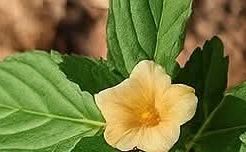The Unexpected Value of Stubborn Grass: Turning a Garden Nuisance into a Natural Ally: Often dismissed as nothing more than a persistent weed, stubborn grass – those hardy, fast-spreading varieties that gardeners usually try to get rid of may actually deserve a second look.Despite its reputation, this unassuming greenery offers a surprising number of practical uses. From improving soil stability to supporting wildlife, stubborn grass can be transformed from a landscaping headache into an environmental asset. Here’s how this overlooked plant can work with you, not against you.1. Natural Erosion ControlStubborn grasses like Bermuda or crabgrass have dense, fibrous root systems that help hold soil in place—especially on slopes or areas prone to runoff. Instead of removing them entirely, you can use them strategically to protect vulnerable land from erosion.2. A Free Source of Livestock FeedSome of these grasses are surprisingly nutritious and can be used as feed for cattle, goats, or sheep. If you have unused pasture space, letting certain grasses grow naturally can provide a low-maintenance food source while cutting down on costs.3. Green Mulch for Your GardenInstead of throwing it away, cut stubborn grass and lay it around your plants. It acts as a natural mulch—helping retain moisture, suppress weeds, and enrich the soil as it breaks down.4. Powerful Compost IngredientDue to its high nitrogen content, stubborn grass is a great “green” material for compost. When mixed with dry leaves or other “brown” materials, it breaks down into rich, fertile compost. Just make sure to let it fully decompose to avoid sprouting any leftover seeds.5. Natural Weed BarrierSome grasses release chemicals that inhibit the growth of nearby plants (a process called allelopathy). You can use this to your advantage by planting them as natural borders to prevent weeds from taking over your flower beds or vegetable patches.6. Potential for BiofuelFast-growing grasses like switchgrass have been studied as renewable sources for bioethanol. In areas where these grasses grow in abundance, they could even be part of a sustainable energy solution.7. Traditional Crafts and HandiworkIn many regions, tough grasses are used in handmade crafts. Dried stalks can be woven into baskets, mats, or decorative pieces, offering both a creative outlet and a way to reuse an unwanted resource.8. Quick Lawn RepairGot bare patches in your lawn? Hardy grass varieties like crabgrass may not be the perfect match, but they’re excellent at filling gaps quickly and resisting foot traffic. It’s a simple, cost-free way to restore green cover and prevent soil exposure.9. Support for WildlifeLetting patches of stubborn grass grow naturally can provide food and shelter for birds, insects, and small animals. Birds feed on their seeds, while dense grass offers protection for wildlife to thrive right in your yard.10. Medicinal and Herbal UsesSome stubborn grasses have been used in traditional healing systems for generations.Bermuda grass is used in Ayurvedic practices for treating wounds and infections.Lemongrass, though less invasive, shares similar durability and is known for digestive and anti-inflammatory benefits.Final Thoughts: What seems like an invader might just be an underappreciated ally. Instead of constantly fighting stubborn grasses, consider the benefits they offer when used intentionally. Whether it’s healing the land, feeding animals, or supporting your garden’s health, these persistent plants can play a surprising role in sustainable living.Sometimes nature’s most useful tools are the ones we try hardest to remove. With the right perspective, stubborn grass becomes less of a problem and more of a solution.Post navigation
More Than Just Grass: A Quiet Force of Nature You Didn’t Expect
